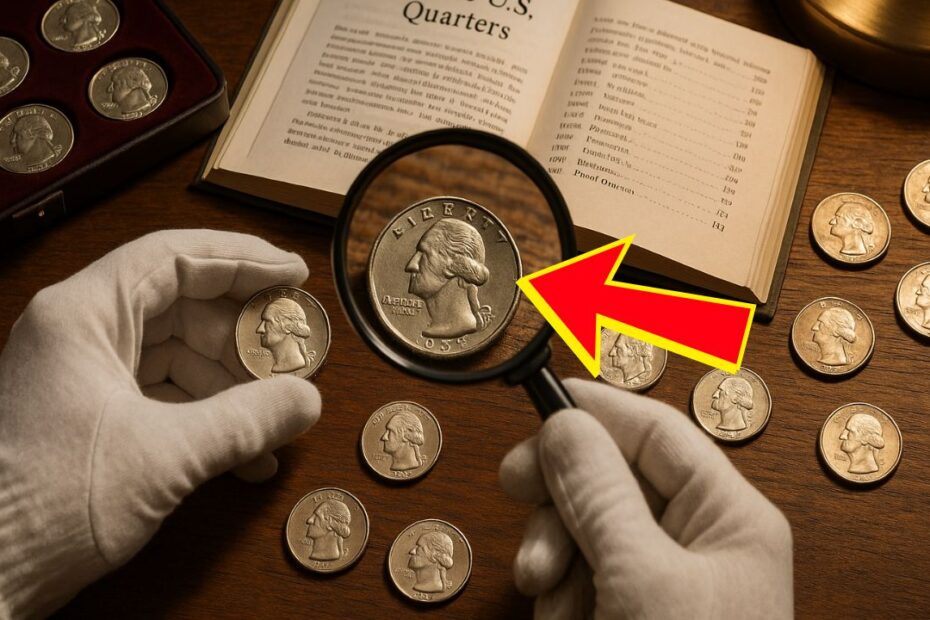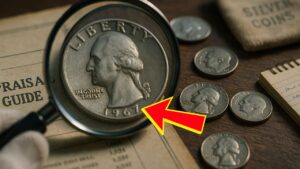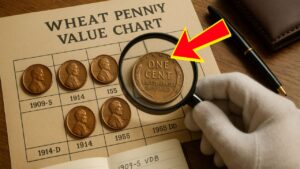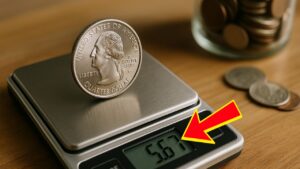The world of coin collecting is fascinating, and among U.S. coins, quarters are especially popular due to their history, variety, and potential value.
While most quarters in circulation are worth their face value, some rare or special editions can fetch hundreds, thousands, or even millions of dollars among collectors and investors.
This guide will provide a detailed overview of which quarters are worth money, covering rare dates, mint errors, limited editions, and investment strategies.
Understanding the Basics of Quarter Collecting
Before diving into valuable quarters, it’s essential to understand the basic types of U.S. quarters.
- Washington Quarters (1932–1998): The classic quarter design featuring George Washington on the obverse and an eagle on the reverse.
- State Quarters (1999–2008): Released to honor all 50 U.S. states, featuring unique designs on the reverse side.
- America the Beautiful Quarters (2010–2021): Focused on national parks and historic sites, each with intricate reverse designs.
- Special Edition Quarters: Includes bicentennial quarters, commemorative issues, proof coins, and mint errors.
The value of a quarter depends on factors like rarity, demand, mint mark, condition, and historical significance.
Factors That Determine a Quarter’s Value
Collectors and investors consider several key factors when evaluating quarters:
- Rarity: Coins with low mintage or limited production runs are more valuable.
- Condition/Grade: Coins in pristine condition, especially uncirculated or proof coins, can command higher prices.
- Mint Mark: Coins from certain mints, like the San Francisco (S) or Denver (D) mints, may be rarer.
- Errors and Varieties: Misstrikes, doubled dies, or off-center coins can drastically increase a quarter’s value.
- Historical Significance: Quarters marking important events or anniversaries often attract collectors.
Valuable Washington Quarters (1932–1998)
Key Rare Dates
Washington quarters are among the most collected, and certain years are highly sought after:
| Year | Mint Mark | Value Range | Notable Features |
|---|---|---|---|
| 1932 | D, S | $150–$50,000+ | First year of issue; low mintage |
| 1937 | D | $100–$3,000 | 1937-D “Three-Legged” error |
| 1950 | S | $30–$2,500 | Low mintage and high collector demand |
| 1964 | None | $5–$250 | Last silver quarter; high intrinsic silver value |
| 1965–1969 | D, S | $2–$20 | Clad composition, some in high grades are valuable |
| 1970 | S | $5–$300 | High-grade proofs and uncirculated examples |
Note: Quarters minted before 1965 are 90% silver, giving them a minimum intrinsic value based on silver prices. As of 2025, the silver content is worth around $4–$5 per coin, but rare dates and mint errors significantly increase the value.
Special Errors and Varieties
- 1937-D “Three-Legged” Quarter: A minting error that removed one of the eagle’s legs. Can sell for $50,000 in top condition.
- Doubled Die Quarters: Appear with doubled images of letters or numbers, especially in the 1940s–1950s.
- Off-Center Quarters: Coins with designs striking off-center can range from $50 to $1,500.
Valuable State Quarters (1999–2008)
The 50 State Quarters Program was released to celebrate each state, and while many are common, certain editions are highly collectible:
| Year | State | Mint Mark | Value | Notes |
|---|---|---|---|---|
| 2004 | Wisconsin | D | $50–$350 | Error coins include extra leaf varieties |
| 2005 | North Carolina | D | $30–$150 | Rare die variations exist |
| 2000 | Maine | P | $15–$100 | Some misprinted quarters are valuable |
| 2003 | Massachusetts | D | $20–$200 | Proof and error coins attract collectors |
Key Points
- Mint Errors: Many state quarters have minor errors, such as doubled dies, extra lines, or missing details.
- Proof Sets: Quarters from proof sets in perfect condition are more valuable than circulation coins.
America the Beautiful Quarters (2010–2021)
This series highlights national parks and landmarks and is popular among both collectors and investors.
| Year | Park / Site | Mint Mark | Value Range | Notes |
|---|---|---|---|---|
| 2010 | Hot Springs (AR) | S | $10–$100 | Proof coins are especially prized |
| 2011 | Denali (AK) | S | $10–$120 | Limited proof mintage |
| 2015 | Great Sand Dunes (CO) | S | $15–$150 | Collectors seek mint errors |
| 2019 | Lowell National Historical Park (MA) | S | $20–$200 | Rare misstrikes increase value |
Collectors should focus on proof coins, high-grade uncirculated coins, and error coins, which are the most likely to increase in value over time.
Bicentennial Quarters (1776–1976)
Bicentennial quarters were released to celebrate the 200th anniversary of the United States.
| Mint | Composition | Value | Notes |
|---|---|---|---|
| P, D, S | Copper-Nickel & Silver | $1–$7,000+ | S mint silver proof coins are highly valuable; rare misprints fetch premium prices |
The 1976-S silver proof quarter is among the most valuable of this series, especially in top grades.
Tips for Collectors and Investors
- Check Mint Marks: The mint mark can significantly affect a coin’s value.
- Grade Carefully: Coins are graded from Poor (P-1) to Perfect Mint State (MS-70). Higher grades mean higher prices.
- Look for Errors: Misstrikes, doubled dies, and off-center coins can make an otherwise common coin extremely valuable.
- Invest in Proof Coins: Proof coins are struck with special dies and finishes, appealing to collectors and investors.
- Stay Informed: Values fluctuate with market demand, silver prices, and collector interest.
Understanding Coin Grading
Grading coins is essential for evaluating their worth:
| Grade | Description | Collector Value Impact |
|---|---|---|
| P-1 to F-12 | Poor to Fine | Low value; often face value |
| VF-20 to EF-45 | Very Fine to Extremely Fine | Moderate value; minor wear |
| AU-50 to AU-58 | About Uncirculated | High value; minimal wear |
| MS-60 to MS-70 | Mint State | Maximum value; pristine condition |
| PR / PF | Proof Coins | Highly valuable; collectible |
Professional grading by services like PCGS or NGC increases trust and liquidity when selling coins.
Current Market Trends for Quarters
- Silver Quarters Rising: As silver prices increase, pre-1965 silver quarters become more valuable.
- Collector Interest in Errors: Coins with unusual errors attract high bids in auctions.
- Digital Marketplaces: Online auctions and marketplaces have made rare quarters more accessible, increasing competition among collectors.
Investing in Quarters
Quarters are more than just collectibles—they can also be investment assets.
- Focus on rare Washington quarters and silver issues for long-term growth.
- Maintain coins in protective holders to preserve value.
- Track market trends to identify quarters that are increasing in demand.
- Consider building sets (state quarters, America the Beautiful, or bicentennial quarters) to diversify your collection.
Quarters offer a fascinating blend of history, art, and investment potential. From rare Washington quarters to collectible state and America the Beautiful quarters, understanding which coins are worth money requires careful attention to rarity, condition, mint marks, and errors.
For both collectors and investors, maintaining coins in pristine condition, staying updated on market trends, and focusing on valuable series can lead to substantial financial and historical rewards. Whether you’re just starting your collection or looking to invest in rare quarters, the U.S. quarter market continues to offer incredible opportunities.
FAQs
Are all quarters worth money?
No, most quarters are worth only their face value. Only rare dates, mint errors, proof coins, and silver quarters carry significant collector or investment value.
How can I determine if my quarter is valuable?
Check the mint mark, year, condition, and for any errors or unique varieties. Using professional grading services can also help determine value.
Is collecting quarters a good investment?
Yes, when focusing on rare, high-grade, or error coins, quarters can appreciate in value over time, making them a reliable collectible and investment.



